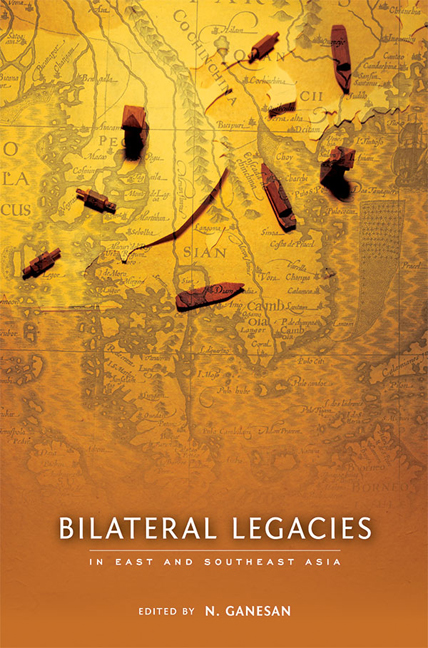Book contents
- Frontmatter
- Contents
- Acknowledgements
- About the Contributors
- 1 Historical Legacies in East and Southeast Asian International Relations
- 2 Historical Overhang or Legacy is What States Make of It: The Role of Realism and Morality in Korea–Japan Relations
- 3 The History Conundrum in Japan's Relations with China
- 4 China–Vietnam Bilateral Overhang or Legacy
- 5 Legacy or Overhang: Historical Memory in Myanmar–Thai Relations
- 6 Glorifying the Inglorious Past: Historical Overhangs or Legacies in Thai–Cambodian Relations
- 7 Comparing Bilateral Overhangs or Legacies in East Asia
- Bibliography
- Index
2 - Historical Overhang or Legacy is What States Make of It: The Role of Realism and Morality in Korea–Japan Relations
Published online by Cambridge University Press: 19 May 2017
- Frontmatter
- Contents
- Acknowledgements
- About the Contributors
- 1 Historical Legacies in East and Southeast Asian International Relations
- 2 Historical Overhang or Legacy is What States Make of It: The Role of Realism and Morality in Korea–Japan Relations
- 3 The History Conundrum in Japan's Relations with China
- 4 China–Vietnam Bilateral Overhang or Legacy
- 5 Legacy or Overhang: Historical Memory in Myanmar–Thai Relations
- 6 Glorifying the Inglorious Past: Historical Overhangs or Legacies in Thai–Cambodian Relations
- 7 Comparing Bilateral Overhangs or Legacies in East Asia
- Bibliography
- Index
Summary
“Historical overhang or legacy”, the key concept for this book, is defined by N. Ganesan as “negative perception that derives from historical interactions and subsequently becomes embedded in the psyche of a state, both at the level of the elites and the citizen body.”
We have another similar concept, “historical animosity”, which is traditionally employed for describing or explaining the fluctuations in Korea–Japan relations. The term “animosity” is defined as “a feeling of strong dislike, ill will, or enmity that tends to display itself in action”, and “feeling” is defined as “an emotion or emotional perception or attitude”. Accordingly, we may define historical animosity as “an emotion or emotional perception or attitude of strong dislike, ill will, or enmity that has historically developed between states and that tends to display itself in the states’ actions or behaviors.” Thus, the word animosity itself indicates it is a type of emotion and perception at the same time. However, the usual identification of emotion with irrationalism by most experts on Korea–Japan relations is somewhat misleading in that scholars on emotion do not regard it as always irrational, but they consider emotion as rational at least sometimes.
Both definitions have cognitive and psychological aspects. Moreover, perception and emotion are not necessarily separate phenomena. Rather, they reinforce each other in affecting Korea–Japan relations negatively. With this interaction in mind, this chapter analyses the nature of the historical overhang or legacy in Korea–Japan relations from a theoretical perspective that regards historical overhang or legacy as being inseparably intertwined with both a state's realpolitik calculation of its national interest and its moral consideration of justice in bilateral encounters.
Here I will discuss, first, the historical background of Korea–Japan relations; second, the realist nature of historical overhang or legacy in Korea–Japan relations; third, the history-perception gap, historical injustices, and historical overhang or legacy in Korea–Japan relations.
- Type
- Chapter
- Information
- Bilateral Legacies in East and Southeast Asia , pp. 22 - 54Publisher: ISEAS–Yusof Ishak InstitutePrint publication year: 2015

